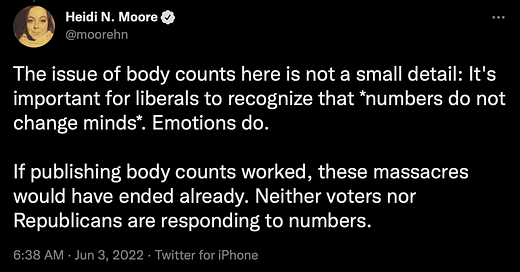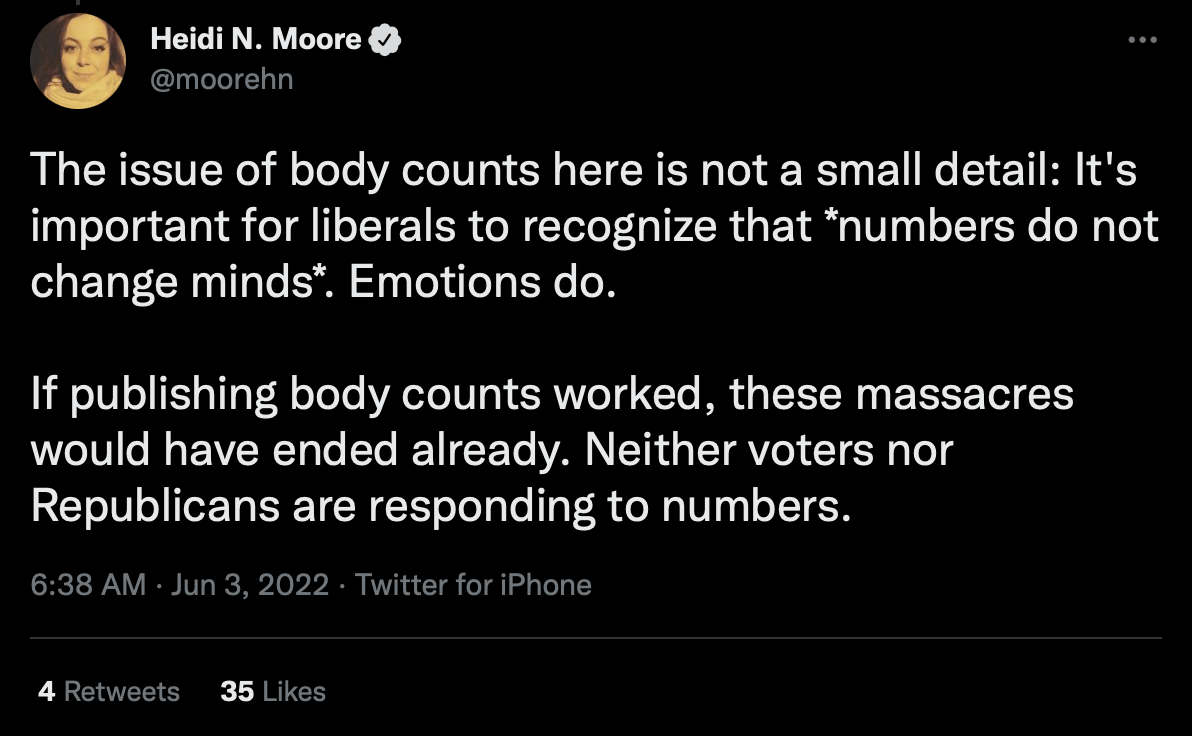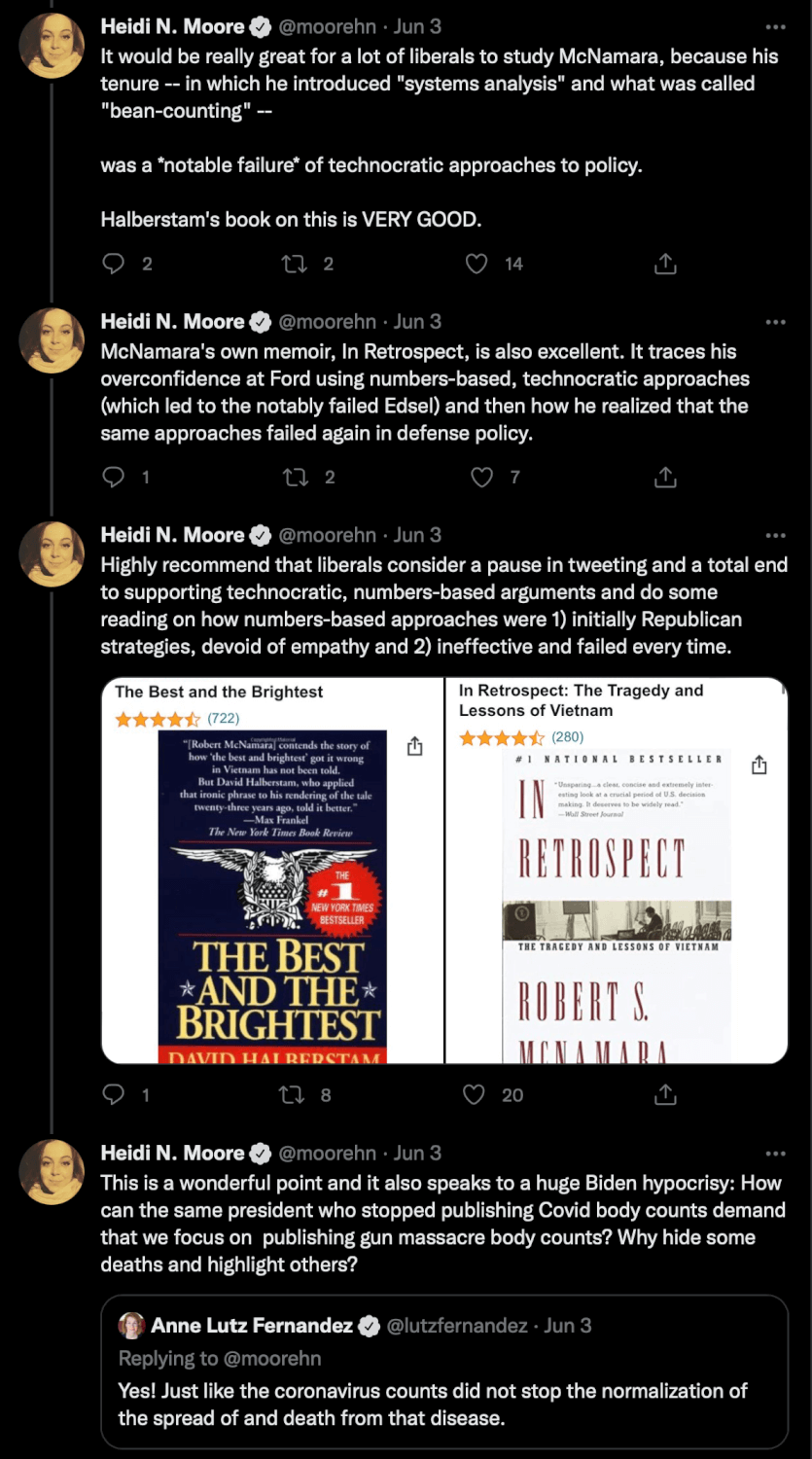What’s Your Go-To Body Count?
Some US gun control advocates have recently lobbied news organizations to publish daily gun death totals, arguing that a daily “body count” turned public sentiment against the Vietnam War and would do the same against US gun violence.
But the journalist Heidi Moore went to Twitter recently to correct what she called the common historical fallacy of body counts and the end of the Vietnam War. In fact, as Moore notes, publishing daily body counts of “enemy killed” was a key US tactic early in the war invented by then-US Secretary of Defense Robert McNamara. McNamara thought a daily body count would demonstrate progress in the absence of territory taken.
Then Moore went further:
Once you start seeing body counts that didn’t work, you can’t stop seeing them:
Climate change communications has been one big body count of the future — a double abstraction from immediacy and emotion. Climate activists have only recently accessed emotions in their campaigns because generations whose lives will be fully or mostly impacted by climate change have begun to articulate their fear and anger.
Biodiversity conservation communications still lapses into the body count strategy of “species lost,” which accentuates the abstractness both of populations and of creatures never seen.
COVID-19 death and case counts were necessary for public health decisions, but the body count aspect of the figures damped down urgency for action. The higher the count, the more fatalistic more people have became about the virus.
Your impulse as a researcher is to lead with numbers — after all, that’s starting with the most important information and bringing it back to the biggest impact, two shop-worn science communication tactics for connecting with audiences. In other words, bring in the biggest body count you can.
Moore reminds us how clearly ineffective the body count approach is for most audiences, compared with empathy. Kent Beck puts this another way: As a presenter, it’s more important to be trustworthy than expert. Trust starts with demonstrating that you understand and share at least some of the emotions your audience feels about this difficult subject you’re bringing up.
As public experts, we all do it — we all resort to body counts to make our case. What are your go-to body counts? And how can you shift from leaning on dead bodies to connecting with live ones?





